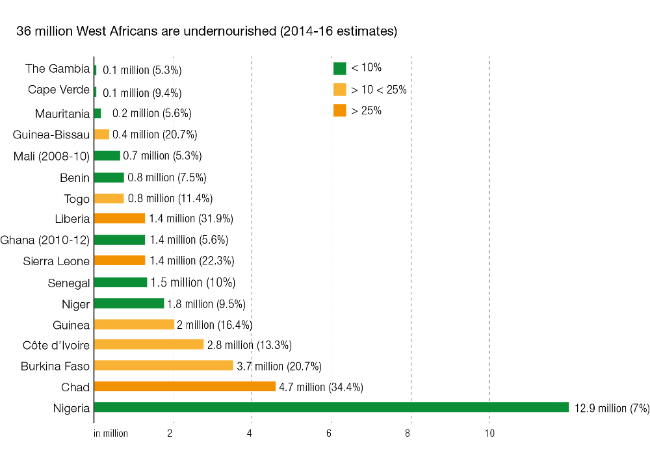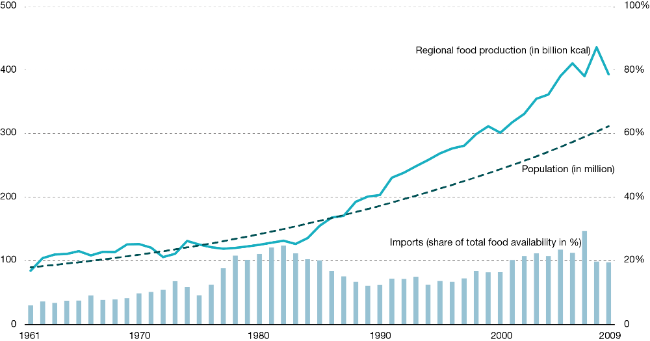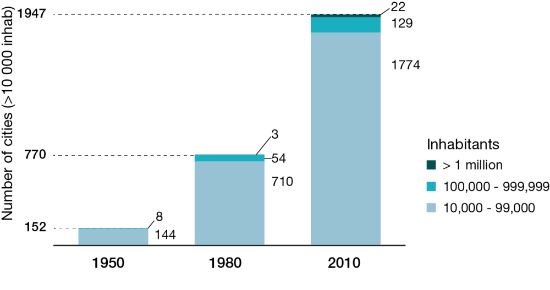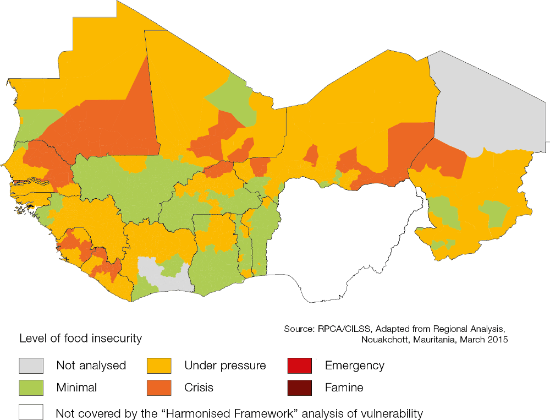Statistics
Stats of the Week: Food Security in West Africa
Sahel and West Africa Week at Expo 2015
Expo Milano 2015 will place a special focus on food security in the region during Sahel and West Africa Week 2015, which runs in Milan from 26 to 30 October. The week’s events are designed to raise awareness of Expo’s theme of “Feeding the Planet, Energy for Life” from a West African perspective.
How secure is West Africa’s food supply?
While the Sahel famines of 1973 and 1984 are still etched in people’s memories, the reality of food security in the region today is very different. Since the early 1990s, undernourishment has decreased by 60% in the Sahel and West Africa. But despite this substantial progress, challenges remain: According to current estimates, some 36 million West Africans are still undernourished and several million people face food emergencies every year, in particular during the lean season.

Source: FAOStat 2015
Agricultural production is outpacing population growth
The state of food security in the region is being shaped by a number of factors, including the pace of urbanisation, regional co-operation and, of course, food production. On this last point, the region has made important progress. Since the beginning of the 1980s, total food production has tripled – outpacing population growth – and per capita food production has increased by more than 40%. The region has also seen no increase in dependence on food imports. Maintaining this progress, and ensuring the sustainability of food and nutrition security, will require improvements to make markets run more smoothly and increased investment in the food economy.

Source: OECD (2013), West African Futures: Settlement, Market and Food Security
Urbanisation is changing the dynamics of food security
In 1950, West Africa had 152 cities and major towns; today it has more than 12 times that number, or 1 947. These include Sub-Saharan Africa’s largest city, Lagos, with 10.6 million inhabitants. The spatial dynamics that accompany urbanisation such as the geographic distribution of towns, their size, their number and the distances between them, are increasingly shaping food and nutritional security outcomes. Rural areas that are closer and better connected to cities and towns are more diversified and have more productive local economies. Analysing the intensification of rural-urban linkages is crucial to informing policy on food security in West Africa.

Source: e-Geopolis - SWAC/OECD 2015
West Africa is better prepared for food crises
The region has made great progress on preventing and managing food crises and is now perhaps better prepared than any other region in Africa. Since the 1980s, various mechanisms for information-sharing and coordinated decision-making have been set up, in particular the Food Crisis Prevention Network (RPCA), created in 1984. The network, which includes West Africa’s main food security actors, closely monitors the food and nutrition situation and identifies vulnerable households and areas that require assistance. The RPCA-Network is managed by the Secretariat of the Sahel and West Africa Club at the OECD and the Permanent Inter-State Committee for Drought Control in the Sahel (CILSS).

Find out more:
|
The Food Crisis Prevention Network (RPCA) tells a Sahel and West Africa success story |
Related Documents
